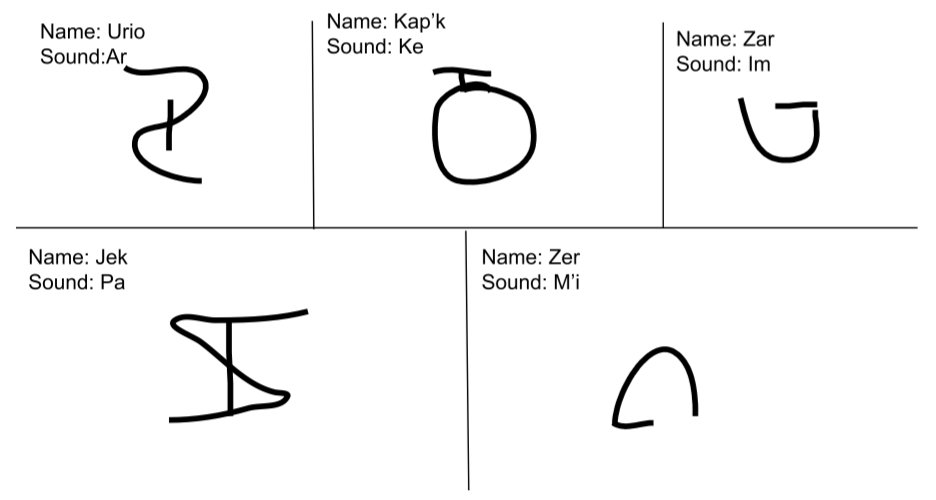My name is Daniel, Jr. and I have created about 30 to 40 linguistic systems and today I will be teaching you how to create your own linguistic system.
Table of Contents:
- Types of Languages
- Steps To Creating A Language:
- Step 1: Determine How Many Symbols You Want
- Step 2: Write The Symbols
- Step 3: Write Rules
- Step 4: (Optional)Add Sounds
- Step 5: (Optional)Add Special Rules and Add Ons
Types of Linguistic Systems:
a: Codes – Codes are a word(in the same language as the original) that represents another word.
b: Direct-Transfer Languages(DTL) – (Example: Cyphers)DTLs are words or letters(there has to be the same number of letters in a DTL as in the original language) that are represented as different symbols that can be easily transferred from the original to the DTL and back.
c: Mixed Languages(ML) – Mixed Languages are symbols that may be more or less in value than the original language’s alphabet. MLs may have the same/similar/different linguistic rules than the language it’s based on.
d: Pure Languages(PL) – PLs may have an equal or a different number of symbols in its alphabet. PLs may have a few rules from its Parent language or any other language but, it must have mostly unique1 linguistic rules.
e+: Neo Languages(NL) – NLs are unknown languages that don’t use words/sounds/symbols to communicate, sometimes things that are beyond current human capacity.
Steps To Creating A Language:
Note: The steps will not work for codes or NLs.
Step 1: Determine How Many Symbols You Want:
First, you must determine the number of base symbols you will want in your alphabet. Note that the more symbols you have the more linguistic diversity there will be, but the language will be more complicated to learn.
Step 2: Write The Symbols:
The second step is to write out the symbols you will use for your language. These can range from simple lines to more complex symbols.
Step 3: Write Rules:
The third step is to write out the rules you will use for your language. It is easiest to just use the rules for English in your first language as they are the rules you are most familiar with.
Step 4: (Optional)Add Sounds:
The fourth step is to add sounds to each of the symbols. Make sure not to have sounds that are too long because if you do then the words will be long and hard to pronounce.
Step 5: (Optional)Add Special Rules and Add Ons:
The fifth rule is to add special rules and add ons. A special rule is generally a unique one and is only for a portion of the alphabet. Add-ons are usually there because of special rules. These can be special marks on the symbols depending on their position in a word or sentence or a second letter for unique purposes like how english letters have a lower case version.
Example:
Nor Language:

unique1: Unique here means that parts of your language cannot be directly copied from sections of another language in order to maintain pureness
Credit: Photo by Daniel Romero on Unsplash


wow great job!